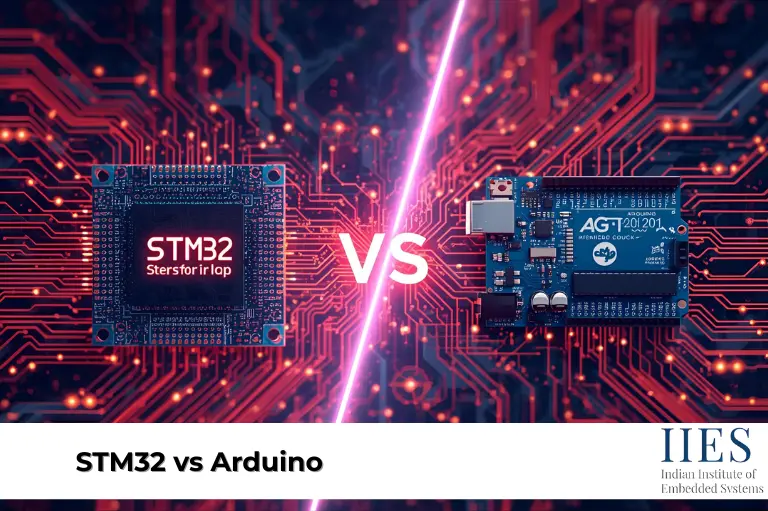
STM32 vs Arduino comparison helps electronics enthusiasts decide which microcontroller suits their project needs.Arduino is famous for being beginner-friendly and easy to use, but STM32 microcontrollers offer more power, speed, and advanced features. Choosing the right platform depends on your project needs and complexity.
STM32 provides high-speed, energy-efficient, and versatile microcontrollers for projects requiring performance beyond Arduino’s basic capabilities.
Every microcontroller has specific hardware features that define its performance. Knowing these features helps you choose the right board for your project.
Arduino Highlights:
Suitable for simple tasks: LEDs, sensors, and motor control.
STM32 Highlights:
Key Takeaway: For complex projects with real-time processing or heavy data handling, STM32 vs Arduino Mega shows STM32 clearly outperforms Arduino.

Efficient power consumption is important, especially for battery-operated devices. Choosing a microcontroller with good energy management can extend project runtime.
STM32:
Key Takeaway: STM32 vs ESP32 demonstrates superior energy efficiency for long-running or battery-powered projects.
Peripherals allow your microcontroller to interact with sensors, motors, and other devices. More options mean more advanced project possibilities.
Arduino:
STM32:
Key Takeaway: STM32 vs Arduino Uno provides richer peripheral options for advanced and versatile project designs.
The software environment affects how easy it is to write and debug code. Beginners often prefer simplicity, while professionals may need advanced tools.
Arduino IDE:
STM32 IDE Options:
Budget and availability are key when choosing a board. Some microcontrollers are cheap and easy to source, while others may cost more but offer extra features.
Arduino:
STM32:
A strong community and good documentation help beginners and professionals solve problems faster and learn more efficiently.
Arduino:
STM32:
Key Takeaway: Arduino is beginner-friendly with community help, while STM32 provides professional-grade resources for complex projects.
As projects grow, your board must handle more tasks and sensors. Scalability ensures your project can expand without hardware limits.
Arduino:
STM32:
Key Takeaway: STM32 vs ESP32 vs Arduino confirms STM32 scales better for complex and professional-grade projects.
Choosing the right board depends on project needs, skill level, and future expansion. A proper match saves time and improves performance.
| Project Type | Best Choice | Reason |
|---|---|---|
| Beginner DIY | Arduino | Simple setup, low learning curve, affordable |
| Battery-Powered IoT | STM32 | Energy-efficient with advanced power modes |
| Robotics/Automation | STM32 | Rich peripherals and high processing power |
| Quick Prototype | Arduino | Easy to get started and test ideas |
| Advanced Projects | STM32 | Scalable, high-performance, professional tool |
Arduino is perfect for beginners and simple projects due to its ease of use and affordability. STM32 is better for advanced, high-performance applications requiring more processing power, peripherals, and scalability. Your project’s complexity decides the right choice.
STM32 offers 32-bit ARM cores with higher processing speed, memory, and advanced peripherals, while Arduino uses 8-bit microcontrollers suitable for basic projects.
STM32 supports higher clock speeds, multiple communication protocols, and better scalability, making it ideal for complex applications.
Yes, beginners can start with STM32 using STM32CubeIDE, but Arduino is generally easier to learn due to its simple IDE and large community support.
Yes, certain STM32 boards can be programmed using the Arduino IDE with additional libraries.
STM32 offers low latency, real-time processing capabilities, multiple timers, and advanced peripherals suitable for embedded applications.
Choose Arduino for beginner-friendly or simple projects. Choose STM32 for high-performance, scalable, and professional-grade applications.
Indian Institute of Embedded Systems – IIES